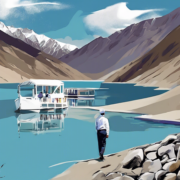Monsoon is a phenomenon that brings relief from the scorching heat of summer. It not only impacts the weather but also influences various aspects of our daily lives. In India, the monsoon season is eagerly awaited as it plays a crucial role in agriculture, economy, and overall well-being of the population.
Understanding the Monsoon Season in India
What is the Monsoon Season?
The monsoon season in India typically occurs from June to September, with variations in different regions. It is characterized by heavy rainfall and gusty winds, which are essential for replenishing water sources and nourishing crops.
Factors Influencing Monsoon in India
The monsoon in India is influenced by various factors such as the temperature difference between land and sea, the presence of the Himalayas, the movement of the Inter-Tropical Convergence Zone (ITCZ), and the El Niño Southern Oscillation (ENSO) phenomenon.
Types of Monsoon in India
India experiences two main types of monsoons: the Southwest Monsoon and the Northeast Monsoon. The Southwest Monsoon, which brings the bulk of the rainfall, occurs from June to September. The Northeast Monsoon, also known as the retreating monsoon, occurs from October to December and affects mainly the southeastern regions of the country.
Impact of Monsoon on Agriculture
The monsoon season plays a vital role in agriculture in India as the majority of the country’s farmland relies on rainfall for irrigation. A good monsoon ensures a bountiful harvest, while a deficient monsoon can lead to droughts and crop failures, impacting the economy and livelihoods of millions of farmers.
Economic Significance of Monsoon
The monsoon season also has a significant impact on the economy of India. The agricultural sector, which employs a large percentage of the population, is directly dependent on monsoon rainfall. A good monsoon leads to increased agricultural output, higher rural incomes, and improved GDP growth.
Challenges Posed by Monsoon
While monsoon rainfall is crucial for agriculture, excessive rainfall can lead to flooding, landslides, and waterlogging, causing loss of lives and property. Inadequate infrastructure and poor drainage systems exacerbate these challenges, highlighting the need for better urban planning and disaster management strategies.
Monsoon Tourism
The monsoon season also ushers in a unique form of tourism known as monsoon tourism. Many regions in India, such as the Western Ghats and Kerala, attract tourists looking to experience the lush greenery, waterfalls, and cooler temperatures during the monsoon months.
Adaptation Strategies
To mitigate the adverse effects of the monsoon season, various adaptation strategies are being implemented, such as water conservation techniques, crop diversification, improved weather forecasting, and disaster preparedness measures. These strategies aim to enhance resilience and minimize the impact of extreme weather events.
Conclusion
The monsoon season in India is a complex and dynamic phenomenon that affects various sectors of the economy and society. Understanding the intricacies of the monsoon system and implementing sustainable practices are essential for harnessing its benefits while mitigating the challenges it presents. By embracing innovation and resilience, India can leverage the monsoon season to promote agricultural growth, economic stability, and overall well-being.
Frequently Asked Questions (FAQs)
1. When does the monsoon season occur in India?
The monsoon season in India typically occurs from June to September, with variations in different regions.
2. How does the monsoon impact agriculture in India?
The monsoon season plays a vital role in agriculture in India as the majority of the country’s farmland relies on rainfall for irrigation. A good monsoon ensures a bountiful harvest, while a deficient monsoon can lead to droughts and crop failures.
3. What are the types of monsoons in India?
India experiences two main types of monsoons: the Southwest Monsoon and the Northeast Monsoon. The Southwest Monsoon, which brings the bulk of the rainfall, occurs from June to September.
4. What factors influence the monsoon in India?
The monsoon in India is influenced by various factors such as the temperature difference between land and sea, the presence of the Himalayas, the movement of the Inter-Tropical Convergence Zone (ITCZ), and the El Niño Southern Oscillation (ENSO) phenomenon.
5. How does the monsoon impact the economy of India?
The monsoon season has a significant impact on the economy of India, especially on the agricultural sector. A good monsoon leads to increased agricultural output, higher rural incomes, and improved GDP growth.
6. What are some challenges posed by the monsoon season in India?
Excessive rainfall during the monsoon season can lead to flooding, landslides, and waterlogging, causing loss of lives and property. Inadequate infrastructure and poor drainage systems exacerbate these challenges.
7. What is monsoon tourism in India?
Monsoon tourism is a unique form of tourism that attracts visitors looking to experience the lush greenery, waterfalls, and cooler temperatures during the monsoon months in regions such as the Western Ghats and Kerala.
8. What are some adaptation strategies to mitigate the impact of the monsoon season?
Adaptation strategies such as water conservation techniques, crop diversification, improved weather forecasting, and disaster preparedness measures are being implemented to minimize the impact of extreme weather events during the monsoon season.












Comments